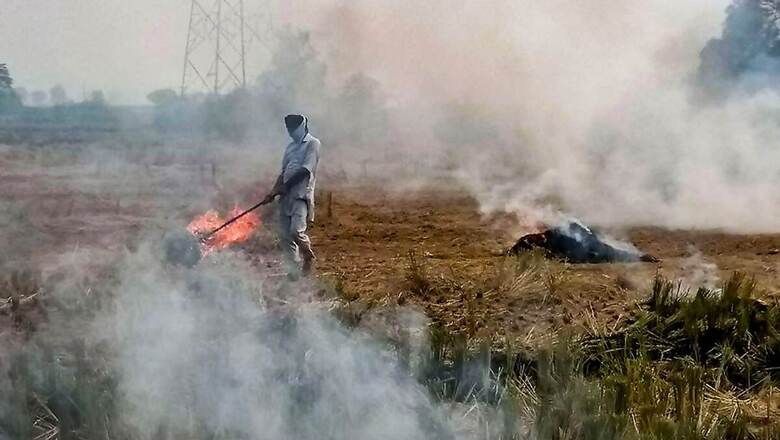
views
Punjab recorded a whopping 33,165 farm fire counts using satellite images between September 21 and November 1. It is a 57 per cent rise in farm fire counts as compared to the corresponding period in 2018 and a 47.38 per cent rise since last year for the same period, Punjab government data shows.
During the same period in 2018 and 2019, Punjab had recorded 21,014 and 22,503 farm fires respectively, as per data from Punjab Pollution Control Board (PPCB).
In neighbouring Haryana, 6,034 farm fires were recorded in the same period between mid-September and November, officials from Haryana State Pollution Control Board (HSPCB) said.
An early beginning to the Kharif harvest season, the long-drawn protests against three central farm laws and poor delivery of straw management machinery are some of the causes behind this spike in Punjab, officials of PPCB and farmer union leaders told News18.
The massive number of farm fires in Punjab has been steadily rising since mid-October and has been concentrated in the Majha region across Patiala, Firozpur, Sangrur, Faridkot, Fazilka, Bathinda, Ludhiana, Fatehgarh Sahib, Moga and Barnala districts.
Officials said that the rise in farm fires also needed to be seen in the context of a larger procurement done so far.
“We have seen more fire counts compared to the last two years. However, as per data from the agriculture department, up to November 1, 148.53 metric tonnes of paddy was procured as against 113.79 metric tonnes during the corresponding period last year. We estimate that the paddy straw burning may end sooner than the previous year,” said Krunesh Garg, Member Secretary of PPCB.
According to the Ministry of Earth Sciences, smoke from farm fires accounted for 40 per cent to PM 2.5 pollution on November 1. By Monday, November 2, it had dipped to 16 per cent largely owing to strong winds. These favourable meteorological factors have been a silver lining for millions living in Delhi-NCR. Winds in the range of 8-20 kmph were recorded over the past weekend. These winds helped in flushing away the pollutants which usually linger on in the atmosphere if winds are calmer.
On Monday too strong winds prevailed in Delhi resulting in better air quality. The city’s air quality index improved to the ‘poor’ category from the ‘very poor’ category observed on Sunday owing to wind speeds in the range of 5-15 kmph, India Meteorological Department (IMD) scientists said. However, air quality is likely to marginally worsen on Tuesday.
“On Monday, the air quality was in the upper end of the ‘poor’ category. Even though the prevailing north-westerly winds are favourable for the transport of smoke from farms in the north, the decent speeds are helping faster dispersal of pollutants. The wind will slow down marginally for a day or two, leading to a drop on air quality,” said Vijay Kumar Soni, Scientist, IMD.
Meanwhile, IMD recorded 3,500 farm fires in Punjab on Monday and over a 100 in Haryana.
Lack of alternatives for farmers, anger against government
Leaders from farm union Bharatiya Kisan Union (Dakaunda) unit said that farmers are choosing to burn paddy stubble for multiple factors. The leaders also said that even though there might be a rise in the absolute number of fire counts, the extent of land where farmers are opting to burn paddy stubble is likely to be the same as previous years.
“You have to understand that 68 per cent of farmers in the state have landholding up to 7 acres or less. These farmers are unable to afford the rental and operating cost of the machinery used to manage paddy straw to prevent burning. Secondly, there is anger against the central government on the issue of the three farm laws, which has spurred many farmers to burn paddy straw individually rather than in groups, as was done earlier. This may explain the higher fire counts,” said Jagmohan Singh, state general secretary, BKU (Dakaunda).
“Most farmers do not want to burn paddy straw. However, if you take into account production costs, rental costs of machinery or that of creating paddy straw bales, it is simply not affordable,” Singh added.
Constituency-Wise Election Results LIVE: West Bengal | Tamil Nadu | Kerala | Assam | Puducherry
LIVE Blogs: West Bengal | Tamil Nadu | Kerala | Assam
















Comments
0 comment